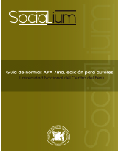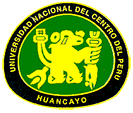Pandemic and regional health disparities in Peru: 1997-2020
DOI:
https://doi.org/10.26490/uncp.sl.2022.6.1.939Keywords:
disparidades, regiones, COVID-19, saludAbstract
This article aimed to show the causality between regional inequalities and mortality from the COVID-19 pandemic. This is due to the presence of regional disparities that generated the absence of policies to reduce said regional inequalities. For this, the health sector was analyzed by region in terms of budget, number of doctors, number of nurses and number of hospitals. These disparities are reflected in the mortality caused by the pandemic. In the research, the quantitative research approach and the hypothetical-deductive method were used, with a simple retrospective ex post facto non-experimental design with data from secondary sources. And it was found that there is a high statistical significance between regional inequalities and mortality from COVID-19, where Lima is 17 times the average size of the health systems of the rest of the regions. Likewise, a reduction in budget inequality has been found, measured with the GINI index, where it went from 0.30 in 1997 to 0.16 in 2018. Likewise, the budget per capita by region increased significantly, where in average terms it grew by 78% from 1997 to 2018. But, all this has not been enough to successfully face the pandemic, quite the contrary. In conclusion, the economic model did not generate an adequate infrastructure to face the COVID-19 pandemic and there is a great disparity in health coverage between regions.
References
Apaza-Aquino, H., Espetia-Turpo, F. y Villanueva-Quispe, S. G. (2021). La pandemia del COVID-19 en el altiplano peruano. Revista científica Waynarroque, 16 (13). http://revistacientificawaynarroque.com/index.php/rcsaw/article/view/16/13
Acurio, L. R. y Dolmos, B. (2020). El neoliberalismo y su carácter de clase en tiempos de pandemia. Nueva Hegemonía (1), 97-119. https://nuevahegemonia.centropatria.pe/public/uploads/articulos/2020-10-02-02-43-31_Acurio-Dolmos.pdf
Bonet-Morón, J., Ricciulli-Marín, D., Pérez-Valbuena, G. J., Galvis-Aponte, L. A., Haddad, E. A., Araújo, I. F. y Perobelli, F. S. (2020). Impacto económico regional del Covid-19 en Colombia: un análisis insumo-producto. Economía Regional y Urbana, (288), 1-33. https://repositorio.banrep.gov.co/bitstream/handle/20.500.12134/9843/DTSERU_288.pdf?sequence=1yisAllowed=y
Campodónico, H. (20209, de abril). La pandemia, el neoliberalismo y el mundo que ya fue. Otra Mirada. http://www.otramirada.pe/la-pandemia-el-neoliberalismo-y-el-mundo-que-ya-fue
Díaz- Albertini, J. (2020). La esquizofrenia neoliberal [Archivo PDF]. Universidad de Lima. https://repositorio.ulima.edu.pe/bitstream/handle/20.500.12724/11099/Diaz_esquizofrenia_neolibera.pdf?sequence=1yisAllowed=y
Emmanuelle , P. y Arenas Sotelo, E. (setiembre, 2021). Estrategias familiares y comunitarias ante la crisis de salud de la pandemia de COVID-19 en la región de Cusco (Perú) [Presentación de paper]. Crisis global, desigualdades y centralidad de la vida, Vancouver, Canadá. https://dial.uclouvain.be/pr/boreal/object/boreal:240254
Fernández Rojas, G., Mamani Larico, J. B., Pérez Suarez, J., Apaza Roque, M., Cajma Mamani, N. J. y Mamani Terrazas, J. (2020). Neoliberalismo y Covid – 19 y efectos en los Gobiernos Municipales. Revista Didáctica de las Ciencias Naturales, 1(2), 108-114. http://revistas.unap.edu.pe/journal/index.php/RIC/article/view/420/368
Gonzales-Castillo, J. R., Varona-Castillo, L., Domínguez-Morante, M. G. y Ocaña-Gutiérrez, V. R. (2020). Pandemia de la COVID-19 y las Políticas de Salud Pública en el Perú: marzo-mayo 2020. Revista de Salud Pública, 22(2), 1-9. https://doi.org/10.15446/rsap.V22n2.87373
Guerra, F. y Cercado, M. (2020). Pandemia COVID-19 y crisis del modelo: una oportunidad para repensar el país. Nueva Hegemonía (1), 15-44. https://nuevahegemonia.centropatria.pe/public/uploads/articulos/2020-09-27-09-25-04_Guerra-Cercado.pdf
Herrera Montero, L. (2020, 28 de octubre). Ecuador, pandemia y crisis: contribuciones de crítica. Clacso. https://www.clacso.org/ecuador-pandemia-y-crisis-contribuciones-de-critica-y-formulacion-de-reforma-y-revolucion-como-elementos-interdependientes-de-lucha-antineoliberal/
Hubeñak, F. (1995). Seréis como bestias o la sociedad del futuro según Fukuyama [Archivo PDF]. Universidad Católica de Argentina. https://repositorio.uca.edu.ar/bitstream/123456789/3156/1/sereis-como-bestias-sociedad-futuro.pdf
Landa Díaz, H. O., Cerezo García, V. y Perrotini Hernández, I. (2020). La vulnerabilidad estructural de la economía mexicana ante la crisis derivada de la pandemia COVID-19. Contaduría y administración, 65(4), 1-14. https://dialnet.unirioja.es/servlet/articulo?codigo=7590705
León Navarro, E. (20205, 5 de agosto). Pandemia, crisis del capitalismo y revolución. CEPA. https://revistacepa.net/ojs/index.php/cepa/article/view/12
Llerena Lanza , R. A. y Sánchez Narváez , C. A. (2020). Emergencia, gestión, vulnerabilidad y respuestas frente al impacto de la pandemia COVID-19 en el Perú. Scielo Preprints. https://doi.org/10.1590/SciELOPreprints.94
López González, D. A. y Herrera Sanclemente, E. (2021). Pandemia y crisis del sujeto neoliberal. Middle Atlantic Review of Latin American Studies, 4 (3), 49-57. https://www.marlasjournal.com/articles/abstract/10.23870/marlas.336/
Lossio, J. (2021). Covid-19 en el Perú: respuestas estatales y sociales. História, Ciências, Saude Manguinhos, 28(2) https://doi.org/10.1590/S0104-59702021005000001
Mansilla Torres, K. I. (2021). Cuerpos en pandemia en el perú. Reflexiones desde la fenomenología de Merleau-Ponty. Devenires, 22(43), 217-242. http://devenires.umich.mx/devenires/index.php/devenires/article/view/739/632
Medina Castillo, V. O. (2020). La ejecución presupuestal y su relación en el manejo de la COVID-19 [Tesis de maestría, Universidad Nacional de San Agustín de Arequipa]. Repositorio institucional UNSA. http://repositorio.unsa.edu.pe/bitstream/handle/20.500.12773/12085/UPmecaov.pdf?sequence=1yisAllowed=y
Mújica, Ó. J. y Moreno, C. M. (2019). De la retórica a la acción: medir desigualdades en salud para “no dejar a nadie atrás. Revista Panamericana de Salud Pública, (43), e12. https://doi.org/10.26633/RPSP.2019.12
Ministerio de Salud Perú. (2018). Análisis de Situación salud 2019 [Archivo PDF]. Minsa. https://www.dge.gob.pe/portal/docs/asis/Asis_peru19.pdf
Ministerio de Salud: Dirección General de Epidemiología. (2019). Análisis de la situación de salud 2019 [Archivo PDF]. Minsa. https://www.dge.gob.pe/portal/docs/asis/Asis_peru19.pdf
Niembro, A. y Calá, C. D. (Setiembre de 2020). Impacto económico regional de la pandemia de COVID-19 [Archivo PDF]. Nülan. http://nulan.mdp.edu.ar/3389/1/niembro-cala-covid19.pdf
Ramonet, I. (2020). La pandemia y el sistema mundo. Comunicación, (9), 190-191. http://comunicacion.gumilla.org/wp-content/uploads/2020/09/COM_2020_190-191_95-124.pdf
Vergara, A. (2020). La crisis del COVID-19 como Aleph peruano [Archivo PDF]. http://sisisemail.up.edu.pe/sisisemail/_data/2020/16472/AlephFinal.pdf
Vigo Castilla, M. K. (2021). Crisis mundial sanitaria: oportunidad para pensar al ciudadano dentro del sistema neoliberal peruano. Investigaciones Sociales, (44), 311–322. https://doi.org/10.15381/is.v0i44.19574
Zolezzi Chocano, M. (2020). La ciudad, la COVID-19 y “el desborde inverso”. Revista de Sociología, (30), 119–138. https://doi.org/10.15381/rsoc.v0i30.18909
Downloads
Published
Issue
Section
License
Copyright (c) 2022 Saúl Darío Díaz Maraví

This work is licensed under a Creative Commons Attribution 4.0 International License.








.jpg)















